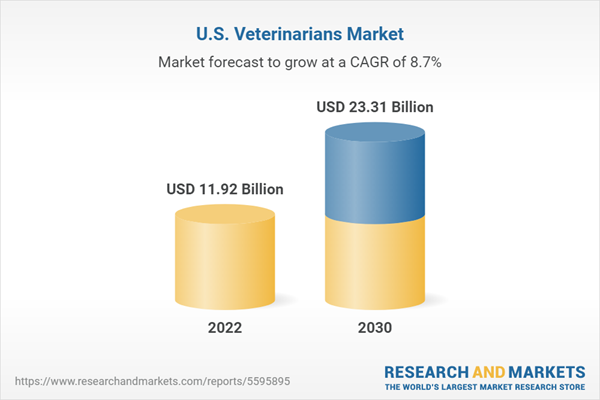The COVID-19 pandemic posed several difficulties for the animal health sector, but it also made clear how important it is to protect the health of both pets and livestock used for food. Manufacturing businesses and veterinary care providers were greatly impacted by containment measures including mobility restrictions and lockdowns. Due to logistical problems, activities related to outbreak investigation and disease reporting for animal diseases were also disrupted. This included limitations on access to farms, the transportation of samples, veterinary equipment, and personal protective equipment (PPE) kits during the pandemic.
Both the Coronavirus Aid, Relief, and Economic Security (CARES) Act and the Coronavirus Response and Relief Supplemental Appropriations Act were passed to quickly and effectively aid employees, families, and small businesses in need and to protect American jobs. This includes, among other things, the Paycheck Protection Program to help small businesses. Additional relief measures were included in C4, the fourth COVID-19 relief bill, which was approved by the US Congress in December 2020. A simplified loan waiver of up to USD 150,000 that applied to the majority of veterinary practices was one of the key components of C4.
People are becoming more in need of animal health services as a result of the increasing number of pet owners in the U.S. and the adoption of pet insurance. At the end of 2022, there were 4.8 million insured dogs across the country, a 22 percent increase over 2021. For dogs, the average annual accident and illness premium was $640, or $53 per month. Cats paid an average of $387 annually or $32 monthly for their accident and illness insurance. The states of California, New York, and Florida have the highest percentages of insured pets. Dogs constitute the majority of insured pets.
U.S. Veterinarians Market Report Highlights
- By sector, the private segment held the largest revenue share in 2022, owing to a large number of veterinarians engaged in private clinical practice, driven by high demand
- The companion animal exclusive segment in the private sector dominated the market in 2022
- Pets are increasingly considered part of the family and pet owners are willing to invest in their health and well-being. This has led to an increased demand for veterinary care to ensure that pets receive appropriate medical attention and preventive care. Regular check-ups, vaccinations, dental care, and early disease detection are increasingly prioritized. This shift towards preventive care has driven the demand for veterinary services in the U.S.
- The field of veterinary medicine has witnessed significant advancements in diagnostics, treatments, and surgical procedures. This includes advancements in areas such as imaging technology, anesthesia, oncology, and orthopedics. As a result, there is a greater need for skilled veterinarians who can provide these advanced services
Table of Contents
Methodology

LOADING...
Table Information
| Report Attribute | Details |
|---|---|
| No. of Pages | 100 |
| Published | June 2023 |
| Forecast Period | 2022 - 2030 |
| Estimated Market Value ( USD | $ 11.92 Billion |
| Forecasted Market Value ( USD | $ 23.31 Billion |
| Compound Annual Growth Rate | 8.7% |
| Regions Covered | United States |









